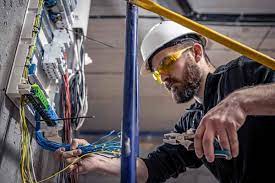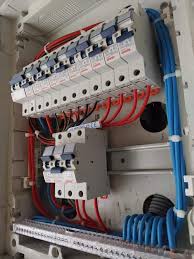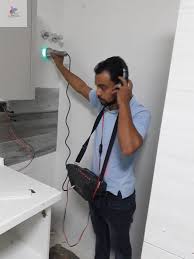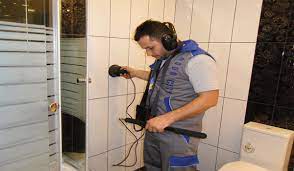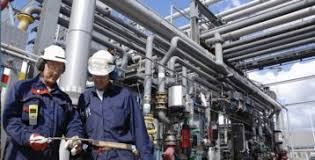Third-party inspection for welding is a crucial component in ensuring quality and safety in the welding industry. In order to guarantee that welding processes and products meet the necessary standards and specifications, third-party inspection plays a vital role. This type of inspection involves an independent organization or individual assessing and verifying that welding procedures, materials, and final products adhere to industry standards and regulations. By employing third-party inspection for welding, companies can ensure that their welding processes and products meet the required quality standards, ultimately providing confidence to both clients and regulatory bodies. This article third party inspection companies in egypt will explore the importance and benefits of third-party inspection for welding in maintaining quality and safety.
One of the most critical aspects of welding is ensuring the quality of the finished product. Third-party inspection for welding can provide an unbiased assessment of the welds, ensuring that they meet all necessary standards and requirements. This can help to prevent costly rework and repairs down the line, as well as ensuring the safety and reliability of the welded components. Third-party inspection for welding typically involves a qualified inspector visiting the site to assess the welding processes, procedures, and finished welds. They will evaluate the welds for adherence to relevant codes and standards, as well as for any defects or discontinuities that could affect the integrity of the weld. Third-party inspection can also provide an added layer of assurance for clients and end-users, demonstrating that the welding work has been independently verified for quality and reliability. This can be particularly important in industries where safety and performance are critical, such as construction, infrastructure, and manufacturing. Overall, third-party inspection for welding helps to ensure that the highest quality standards are met, providing peace of mind for all stakeholders involved in the welding third party inspection company in egypt process.
Third-party inspection for welding involves an independent assessment of third party inspection companies welding processes and finished welds to ensure they meet industry standards and specifications. These inspections are essential for verifying the quality of welded components, preventing defects, and ensuring the safety and reliability of the final product. Qualified inspectors evaluate welds for adherence to codes and standards, as well as for any defects that may affect their integrity. This type of inspection provides an added layer of assurance for clients, end-users, and stakeholders, particularly in industries where safety and performance are paramount. Overall, third-party inspection for welding helps to maintain the highest quality standards and provides peace of mind for all involved in the welding process.
Ensuring Welding Quality: The Importance of Third-Party Inspection

Ensuring welding quality is crucial in various industries to guarantee the strength and durability of welded components. Third-party inspection plays a vital role in this process, as it provides an independent assessment of welding quality. Third-party inspectors are trained and certified professionals who can identify potential defects and ensure that welding processes comply with relevant codes and standards. These inspections can help prevent welding failures, which can lead to significant safety hazards and costly rework. By involving a third-party inspector, organizations can gain assurance that their welds meet the required quality standards and regulations. This can also help in building trust with clients and stakeholders by demonstrating a commitment to quality and safety. Third-party inspection of welding processes involves various activities, such as visual inspections, non-destructive testing, and documentation review. Inspectors assess weld quality, material selection, welding procedures, and adherence to applicable specifications. They can also provide valuable insights and recommendations for improvement to enhance overall welding quality and efficiency. In conclusion, third-party inspection is essential for ensuring welding quality and upholding the integrity of welded components. It provides an unbiased evaluation of welding processes and helps organizations meet quality and safety requirements. Ultimately, investing in third-party inspection can contribute to the overall success and reputation of a business in the welding industry.
The Role of Third-Party Inspection in Welding Safety and Compliance

The role of third-party inspection in welding safety and compliance is crucial in ensuring the quality and integrity of welds. Third-party inspection involves an independent and unbiased examination of welds to verify that they meet specified standards and regulatory requirements. These inspections are typically conducted by qualified and certified individuals or organizations who have the expertise and experience to assess the quality of welding work. They perform visual inspections, non-destructive testing, and other examination methods to identify any defects, discontinuities, or deviations from the applicable codes and standards. Third-party inspection helps to ensure that welding processes are carried out in a safe and compliant manner, reducing the risk of structural failures, material deterioration, and safety hazards. It provides assurance to stakeholders, including clients, regulatory authorities, and the public, that the welds meet the necessary quality and safety requirements. Moreover, third-party inspection can also provide valuable feedback and recommendations for improving welding processes, as well as identifying areas for corrective actions and quality improvements. This can ultimately lead to enhanced safety, reliability, and performance of welded components and structures. Overall, the role of third-party inspection in welding safety and compliance is essential for maintaining the integrity and quality of welded products and structures, while also ensuring that they meet the necessary safety and regulatory standards.
Maximizing Welding Efficiency with Third-Party Inspection Services
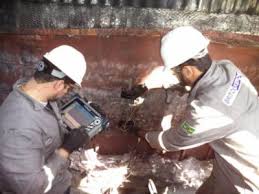
Maximizing welding efficiency with third-party inspection services can help ensure that welding processes and equipment are operating at peak performance. These services involve independent inspectors who have the expertise to assess welding operations and identify areas for improvement. This can include evaluating welding procedures and techniques, inspecting weld quality, and reviewing compliance with industry standards and regulations. By utilizing third-party inspection services, companies can enhance the efficiency and effectiveness of their welding operations, leading to improved productivity, reduced rework, and greater cost-effectiveness. Additionally, third-party inspection services can provide a valuable outside perspective and objective analysis of welding processes, offering insights and recommendations for optimization. Overall, these services can play a crucial role in helping companies achieve optimal welding efficiency and quality.
Understanding the Benefits of Third-Party Inspection for Welding Projects

Third-party inspections for welding projects offer a number of benefits that can ultimately save time and money while ensuring the quality and safety of the finished product. These inspections provide an unbiased evaluation of the welding work, helping to identify any defects or issues early in the process. Third-party inspectors can offer expertise and experience that may not be readily available within the project team, adding an extra layer of assurance that the welding work meets industry standards and regulations. Additionally, involving a third party can help to build confidence and trust with clients and stakeholders, demonstrating a commitment to quality and compliance. Overall, third-party inspection can help to mitigate risks and improve the overall outcome of welding projects.
Improving Welding Standards: The Impact of Third-Party Inspection
Improving welding standards through third-party inspection involves enlisting independent organizations or inspectors to assess welding processes and procedures. This helps ensure that the work meets industry standards and regulations. Third-party inspections can provide unbiased evaluations of welding quality, identify potential issues early on, and help prevent costly rework or safety hazards. They can also contribute to the improvement of welding practices and promote a culture of accountability and continuous improvement within the industry. Overall, third-party inspection can have a significant impact on welding standards by reinforcing quality control and adherence to best practices.
Choosing the Right Third-Party Inspection Provider for Welding Processes
third party inspection companies in egypt
Finding the right third-party inspection provider for welding processes is crucial to ensure the quality and safety of welded products. When selecting an inspection provider, it's essential to consider their experience and expertise in welding inspection, their certification and accreditation, their track record of delivering accurate and reliable inspection results, and their ability to provide comprehensive and thorough inspection services. Additionally, it's important to evaluate their knowledge of industry standards and regulations, their understanding of different welding processes and materials, and their commitment to continuous training and professional development. By carefully assessing these factors, you can choose a third-party inspection provider that meets your specific welding inspection needs and requirements.
The Future of Welding: How Third-Party Inspection is Shaping the Industry
The Future of Welding: How Third-Party Inspection is Shaping the Industry is an in-depth examination of the role that third-party inspection plays in the welding industry. The article explores the increasing demand for third-party inspection services and the impact it has on ensuring the quality and safety of welded products. It discusses the challenges and opportunities presented by third-party inspection, and how it is contributing to the overall development and advancement of welding technologies. The article also provides insights into the current trends and future outlook for third-party inspection in the welding industry.
Navigating Welding Regulations: The Value of Third-Party Inspection
Navigating Welding Regulations: The Value of Third-Party Inspection emphasizes the importance of adhering to welding regulations and the benefits of utilizing third-party inspection services. It delves into the complexities of compliance with welding standards and how third-party inspectors can provide expertise and impartial assessments to ensure that welding processes and procedures meet regulatory requirements. The article may also discuss the potential consequences of non-compliance with welding regulations and how third-party inspection can help mitigate risks and liabilities for organizations involved in welding operations.


